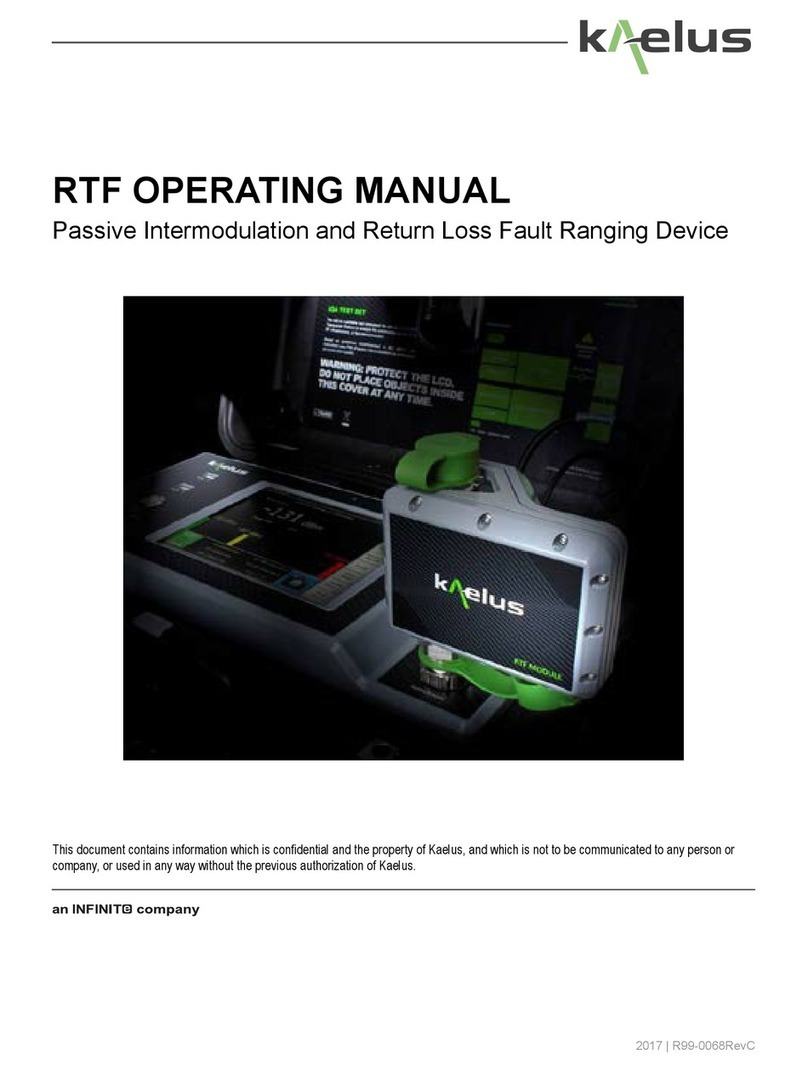
!WARNING: R F H A Z A R D
!WARNING:INTERFERENCE
This series of instrument is capable of producing up to 50 Watts of radio frequency (RF) power in the 700 MHz to 2600
MHz frequency band. Users are reminded that proper precautions must be taken to minimize exposure to these RF elds
to the recommended limits. Please pay particular care to the following areas:
• Switch o the RF power from the test equipment before removing or connecting the cables to the test port. Burns to
ngers and permanent damage to eyes can result from exposure to connectors carrying high levels of RF power.
• Ensure that any antennas being tested are placed so that no personnel are exposed to RF eld levels in excess of the
maximum exposure limits [Ref ARPANSA RPS No. 3 for Australia]
Also, the unit should be operated by a suitably qualied operator in order to ensure interference is not caused to other
spectrum users. Radiation through an antenna requires authorization by the frequency license holder to do so.
The IPA family of Test equipment is exempt from the technical requirements of CFR47 part 15 (FCC part 15) as stated
in Section §15.103 Exempted devices” for Test equipment per sub part §15.103(c). The following Notice is mandated by
Law.
§15.5 “(a) Persons operating intentional or unintentional radiators shall not be deemed to have any vested or
recognizable right to continued use of any given frequency by virtue of prior registration or certication of equipment, or,
for power line carrier systems, on the basis of prior notication of use pursuant to §90.35(g) of this chapter.
§15.5 “(b) Operation of an intentional, unintentional, or incidental radiator is subject to the conditions that no harmful
interference is caused and that interference must be accepted that may be caused by the operation of an authorized radio
station, by another intentional or unintentional radiator, by industrial, scientic and medical (ISM) equipment, or by an
incidental radiator.”
§15.5 “(c) The operator of a radio frequency device shall be required to cease operating the device upon notication by a
Commission representative that the device is causing harmful interference. Operation shall not resume until the condition
causing the harmful interference has been corrected.”
All IPA units and external parts are solely intended as test equipment and not intended for any other use by the operator.
If this instrument does cause harmful interference to radio or television reception, which can be determined by turning the
equipment o and on, the user is encouraged to try to correct the interference by one or more of the following measures:
• Reorient or relocate the receiving antenna
• Increase the separation between the instrument and receiver
• Connect the instrument into an outlet on a circuit dierent from that to which the receiver is connected
• Consult the dealer or an experienced radio/TV technician for help
3
© 2017 Innite Electronics, Inc., All Rights Reserved.
Precautions




























